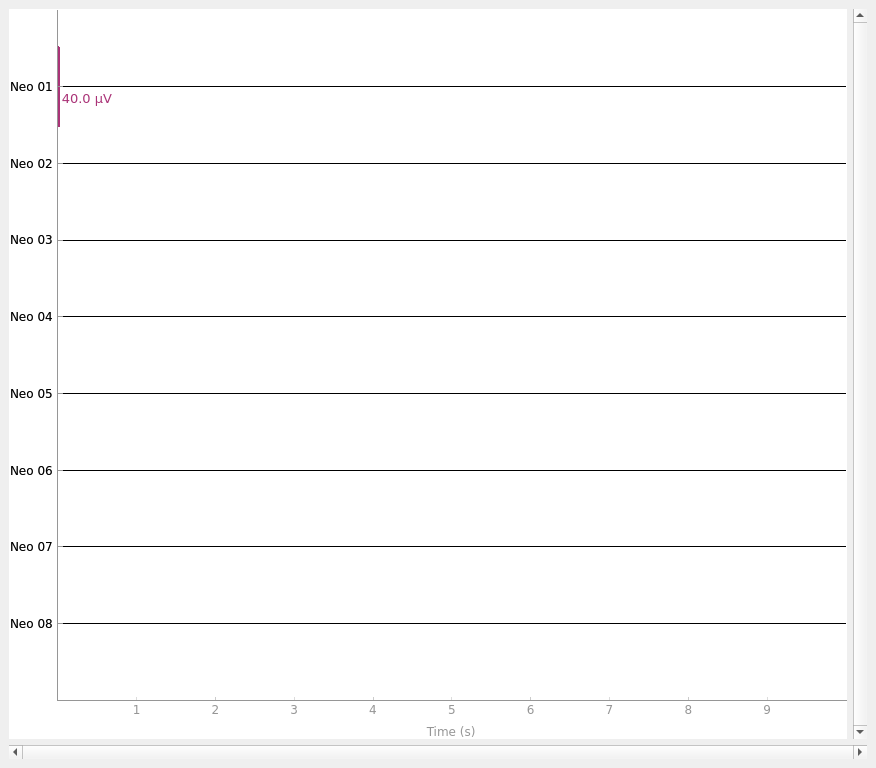Note
Go to the end to download the full example code
How to use data in neural ensemble (NEO) format#
This example shows how to create an MNE-Python Raw object from data
in the neural ensemble format. For general
information on creating MNE-Python’s data objects from NumPy arrays, see
Creating MNE-Python data structures from scratch.
import neo
import mne
This example uses NEO’s ExampleIO object for creating fake data. The data
will be all zeros, so the plot won’t be very interesting, but it should
demonstrate the steps to using NEO data. For actual data and different file
formats, consult the NEO documentation.
reader = neo.io.ExampleIO("fakedata.nof")
block = reader.read(lazy=False)[0] # get the first block
segment = block.segments[0] # get data from first (and only) segment
signals = segment.analogsignals[0] # get first (multichannel) signal
data = signals.rescale("V").magnitude.T
sfreq = signals.sampling_rate.magnitude
ch_names = [f"Neo {(idx + 1):02}" for idx in range(signals.shape[1])]
ch_types = ["eeg"] * len(ch_names) # if not specified, type 'misc' is assumed
info = mne.create_info(ch_names=ch_names, ch_types=ch_types, sfreq=sfreq)
raw = mne.io.RawArray(data, info)
raw.plot(show_scrollbars=False)

Creating RawArray with float64 data, n_channels=8, n_times=100000
Range : 0 ... 99999 = 0.000 ... 10.000 secs
Ready.
Total running time of the script: (0 minutes 2.062 seconds)
Estimated memory usage: 10 MB